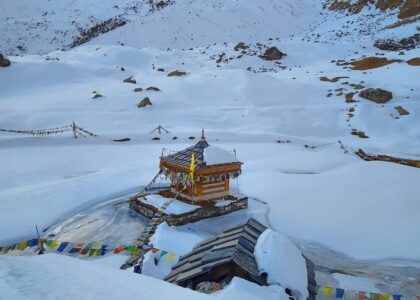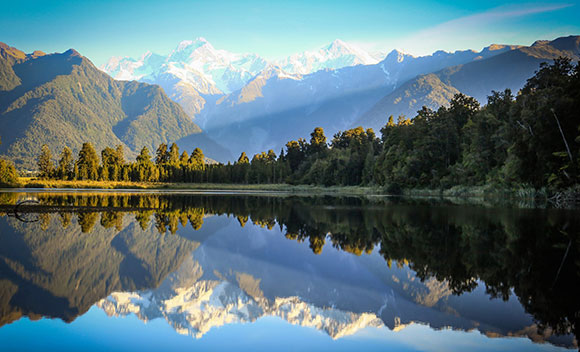Himachal Pradesh, “the land of snow,” stands as one of India’s top travel destinations in 2025, captivating visitors with its breathtaking mountains, vibrant hill stations, spiritual retreats, and adventurous spirit.
Top Destinations to Explore
Himachal is home to iconic places like Shimla, the Queen of Hills, where colonial architecture meets Himalayan vistas on bustling streets such as Mall Road and The Ridge. Manali, set in the Kullu Valley, offers both adventure and serenity—think skiing in Solang Valley, hiking to Jogini Falls, and exploring historic temples like Hidimba Devi. Dharamshala and McLeod Ganj beckon spiritual seekers to the seat of the Dalai Lama, surrounded by lush Kangra Valley forests. For those craving offbeat travel, Spiti Valley and Chitkul present stark, awe-inspiring landscapes and unique Buddhist heritage.
Nature, Adventure, and Culture
Whether trekking snowy peaks or rafting in winding rivers, Himachal caters to every adventure seeker. From paragliding in Bir Billing and river rafting in Kullu to tranquil nature walks by Renuka Lake in Sirmaur, the state delivers year-round attractions. Himachal’s festivals, like Kullu Dussehra and Losar, offer immersive cultural experiences rooted in Hindu and Buddhist traditions. Marvel at ancient monasteries in Lahaul-Spiti, taste sweet apples in Kinnaur, or step back in time at Sujanpur Tira’s fort in Hamirpur.
Planning Your Himachal Trip in 2025
Himachal Pradesh shines in every season: spring and summer are ideal for trekking and sightseeing, monsoon reveals lush green beauty, while winter transforms slopes into snowy wonderlands perfect for skiing and cozy retreats. Visitors can choose packages ranging from romantic honeymoons in Kullu-Manali to adventure-filled road trips covering Shimla, Manali, Dharamshala, Kasol, and Spiti Valley. Many travelers begin in Shimla or Chandigarh, then follow classic routes that loop through the state’s most beloved—and hidden—gems.
Unforgettable Experiences
- Skiing and snowboarding in Solang Valley and Kufri.
- Spiritual encounters at the Dalai Lama Temple and Key Monastery.
- Scenic motorbike journeys to Spiti, Lahaul, and Kinnaur.
- Experiencing local cuisine and vibrant markets in Shimla and Manali.
- Apple orchards, lakes, and nature walks across Renuka and Nahan.
Himachal tourism in 2025 promises “all seasons, all reasons”—blending natural wonders, adventure, spirituality, and culture for an unforgettable mountain getaway.
What are the popular offbeat routes in Himachal for explorers
Popular offbeat routes in Himachal Pradesh for explorers in 2025 include dramatic valleys, hidden villages, and remote trekking circuits that offer authenticity far from mainstream crowds.
Notable Offbeat Routes
- Pangi Valley via Sach Pass
One of the last frontiers of Himachal, this route leads to wild terrain, isolated villages, and challenging motor routes. Sach Pass is famed for adventure, while Pangi’s villages provide raw mountain culture. - Dodra-Kwar Circuit
Accessed via Chanshal Pass from Rohru, these are the remotest villages, cut off by snow much of the year. Experience untouched traditions and dramatic landscapes on a route rarely explored by outsiders. - Miyar Valley
A high-altitude marvel between Zanskar and Pir Panjal, ideal for trekkers wanting uncrowded trails, wildflowers, and nomadic shepherd encounters. - Bahu-Gadagushaini-Chhatri
This forgotten belt near Jibhi remains largely undeveloped. Venture through forested roads to old temples and Seraj’s rich rural culture. - Thachi Valley & Sainj Valley
Both in the lesser-known Seraj region, these valleys offer gene pools of Himalayan biodiversity, scenic meadows, and authentic village stays. - Churah Valley, Chamba
Known for ancient temples, terraced fields, and pristine rivers, Churah offers solitude and vibrant local life near Dalhousie. - Upper Kinnaur and Rupi-Bhaba
Remote villages such as Lippa, Charang, Chitkul, and Rakcham are surrounded by stark high-altitude beauty and rare Buddhist heritage. - Barot, Chota Bhangal, Bara Bhangal
These valleys, especially Barot, serve as the launchpad for strenuous treks and a deep dive into Western Himalayan culture.
Hidden Gems Near Popular Spots
- Grahan Village (near Kasol): Accessible by a forested trek, offers traditional Kathkuni architecture and Himachali warmth.
- Kheerganga Trek (Parvati Valley): Known for natural hot springs and rugged scenery, this trek lets explorers disconnect.
- Jispa (Lahaul): Set by the Bhaga River, ideal for riverside camping, learning about Lahaul’s culture, and slow travel.
- Chichoga Village & Kharma Valley (near Manali): Short trips from Manali lead to tranquil views, secluded in nature with fewer tourists.
These offbeat routes are perfect for explorers searching for authentic experiences, real mountain culture, and a taste of Himachal Pradesh’s untouched beauty.
What are the most remote offbeat destinations in Himachal Pradesh
The most remote offbeat destinations in Himachal Pradesh in 2025 are perfect for travelers seeking solitude, natural beauty, and authentic mountain culture far away from crowds:
- Pangi Valley and Sach Pass
Known as one of the last untamed frontiers, Pangi offers rugged terrain, isolated villages, and a unique tribal culture. Sach Pass itself is a challenging high-altitude mountain pass connecting Pangi to other regions. - Dodra-Kwar Circuit
Some of the remotest villages accessible via Chanshal Pass, known for their seclusion, ancient customs, and Himalayan serenity. - Miyar Valley
High altitude with stunning meadows and wildflowers, ideal for trekkers wanting an untouched Himalayan experience. - Thachi Valley
A hidden gem with apple orchards and ancient temples, offering off-the-beaten-path trekking and peaceful surroundings. - Bahu-Gadagushaini-Chhatri
A lesser-known circuit with forested trails, raw cultural experiences, and ancient temples. - Soil Village near Naggar
An authentically preserved village with traditional Kathkuni architecture, no Wi-Fi, and deep immersion in Himachali culture and nature. - Upper Kinnaur villages (Lippa, Charang, Chitkul)
Remote villages enclosed by stark Himalayan landscapes and rich Buddhist heritage. - Churah Valley (Chamba district)
Known for terraced fields, ancient temples, and glacial streams, it remains unexplored except by locals and die-hard adventurers. - Barot, Chota Bhangal, Bara Bhangal
Remote valleys offering isolation, challenging treks, and vibrant local traditions.
These destinations are characterized by limited accessibility, minimal tourism infrastructure, and a focus on preserving natural and cultural authenticity, making them ideal for true exploration off the beaten path.
What are the key cultural highlights of Himachal’s offbeat regions
Himachal Pradesh’s offbeat regions offer rich cultural highlights that reflect ancient traditions, spiritual vibrancy, and unique local lifestyles far from mainstream tourism.
Key Cultural Highlights
- Traditional Architecture and Village Life
Remote villages like those in Sangla Valley, Thachi, and Bahu-Gadagushaini feature traditional wooden temples, Kathkuni-style houses, and centuries-old village layouts that preserve authentic mountain heritage. These places showcase indigenous craftsmanship, weaving, and traditional apple cultivation methods unique to the region. - Festivals and Fairs
Offbeat areas celebrate vibrant, centuries-old festivals such as:- Kullu Dussehra: A grand week-long festival honoring local deities with processions and folk performances.
- Losar Festival (in Lahaul valley): Tibetan New Year marked by dance, prayers, and rituals attracting locals and visitors.
- Sazo Festival in Kinnaur: Known for exotic rituals and spiritual fervor.
- Doongri Fair and Pori Festival: Celebrated with music, local arts, and community feasts in remote valleys.
- Spiritual and Religious Heritage
Offbeat Himachal holds ancient monasteries and temples such as those in Lahaul-Spiti, Sangla, and Churah valley, where indigenous and Tibetan Buddhist traditions thrive alongside Hindu worship. Sacred places often remain rooted in pre-Buddhist or animistic beliefs, offering deep spiritual experiences. - Local Crafts and Cuisine
Handicrafts such as wool weaving, wood carving, and metalwork remain vital in remote communities. The local cuisine varies widely, featuring mountain staples like barley, buckwheat, apricots, and unique dishes that reflect the fusion of Pahari and Tibetan culinary influences. - Lifestyle and Customs
Life in these regions revolves around agriculture, pastoralism, and community rituals. Many villages retain an ancient democratic setup (like Malana) or have social structures governed by customary laws and festivals. Respect for nature and spiritual harmony is inseparable from daily life.
Himachal’s offbeat regions not only provide breath-taking Himalayan landscapes but also invite travelers to immerse themselves in time-honored traditions, festivals, and living cultural legacies that define the soul of the mountains.
How do traditional Himachali festivals differ in remote villages
Traditional Himachali festivals in remote villages differ from those in more accessible towns mainly in their scale, authenticity, and local customs steeped deeply in indigenous culture and spiritual practices.
Scale and Community Involvement
In remote villages, festivals tend to be smaller and intensely community-focused, involving the entire village or cluster of settlements. These celebrations are less commercialized and preserve age-old rituals passed down through generations. In contrast, festivals in towns like Shimla or Manali attract large crowds and tourists, often incorporating more modern elements and celebrations.
Indigenous Rituals and Variations
Remote regions often observe unique festival practices influenced by local tribal, Buddhist, or animistic traditions alongside mainstream Hindu customs. For instance, in Lahaul-Spiti and Kinnaur, festivals such as Losar and Sazo showcase Tibetan Buddhist rituals, masked dances, and shamanistic practices not commonly seen elsewhere in Himachal. Villages may also have their own sacred dances, songs, and ceremonies that honor ancestors, deities, and natural spirits reflecting their environment and history.
Preservation of Ancient Customs
Remote villages maintain traditional dress codes, folk music, and dance forms with little outside influence. Festivals act as a vital mechanism for cultural preservation, with elders playing key roles in organizing and conducting ceremonies, ensuring that ancient knowledge and practices endure.
Integration with Daily Life and Nature
In remote areas, festivals are intricately connected to agriculture, seasons, and nature worship. Rituals often include offerings to local deities for good harvests, protection from natural disasters, and community prosperity. This close bond with the land and nature’s cycles defines the spiritual depth of these celebrations.
Thus, traditional Himachali festivals in remote villages stand out for their intimate scale, deep cultural roots, and vibrant local customs, offering travelers an authentic glimpse into the living heritage of the Himalayas.







